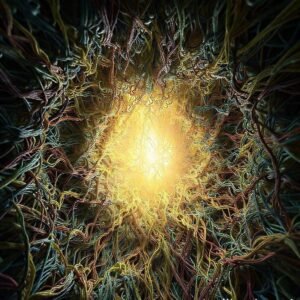The Black Death: How a Random Mutation Granted Europeans Unforeseen Immunity 📜🔬🤯

Black Death: Genetic Immunity & European Survival
The Black Death was more than a catastrophe; it was a brutal experiment in natural selection, etching genetic secrets into the European genome that offer protection even today. In this episode, we delve into the depths of genetics to uncover how a random mutation conferred survival from the plague upon our ancestors, and how their descendants now carry a latent defense against some of the most formidable viruses threatening our world. Join us on an extraordinary journey through genetics and history, revealing how the Black Death shaped the future of our immunity and how the past remains alive within our cells.
Before we embark on this journey of discovery, share your predictions about this mutation in the comments. And accompany us every step of the way by subscribing to our documentary channel.
The Chilling Reality of Bubonic Plague
Bubonic plague resonates through history, not as a mere memory, but as a chilling reminder of mortality. It is not simply a relic of the past, but a terrifying and tangible biological reality. The direct cause is the virulent bacterium, Yersinia pestis, a microscopic organism often transmitted through fleas parasitic on rodents. Imagine a city teeming with rats, each carrying a microscopic time bomb.
When an infected flea bites a human, it injects Yersinia pestis into the bloodstream, initiating a biological battle. The initial warning sign is the swelling of the lymph nodes. Buboes, the swollen and painful lumps that often appear in the groin, armpit, or neck, serve as a stark indication of danger. Fever, chills, headache, and fatigue further compound this biological nightmare. However, the true peril lies in the rapid dissemination of the infection. If antibiotics are not administered promptly, bubonic plague can progress into two even more lethal forms: pneumonic plague, which directly attacks the lungs, and septicemic plague, which relentlessly poisons the blood. Both are often fatal.
The Black Death: A Natural Selection Event
During the Middle Ages, this scenario played out relentlessly, culminating in the Black Death, a pandemic that decimated nearly half of Europe’s population. As flames consumed villages and cities, physicians of the era were confronted with a perplexing enigma: entire families miraculously survived the Black Death, while others were completely eradicated. Giovanni Boccaccio, in The Decameron, describes this stark disparity in mortality rates between adjacent neighborhoods in Florence, as if death itself was selecting its victims with incomprehensible cruelty. In London, mortality records revealed individuals who survived the initial wave of the plague, only to succumb to other diseases later, confirming that survival was not a guarantee of lasting immunity. Even in Milan, where authorities imposed strict quarantines on the infected within their homes, survivors emerged, silent witnesses to the secret of resistance.
Was hygiene the key, or was it mere chance, or was there another underlying factor? Speculation arose regarding an inherent advantage, rooted in the genes of some Europeans. Anecdotal reports suggested that healthcare workers, those on the front lines facing death directly, were not necessarily susceptible to infection, raising critical questions about transmission modes and the potential for hidden defense mechanisms in certain individuals.
The CCR5-Δ32 Mutation: A Genetic Enigma
Current estimates suggest that approximately 10% of Europeans carry a genetic mutation (CCR5-Δ32) that confers resistance to HIV, a possible consequence of the Black Death. Let’s delve into this genetic enigma: CCR5-Δ32. What is this mutation carried by nearly one in ten Europeans? Imagine receptors on the surface of your immune cells, specifically designed to receive signals from viruses. The CCR5-Δ32 mutation disrupts this receptor, rendering it virtually invisible and preventing the entry of certain viruses, including specific strains of HIV.
But why now? Why did this mutation emerge specifically? Compelling evidence suggests that CCR5-Δ32 was not always present. It is believed to have originated in Europe approximately seven centuries ago, during a critical period, perhaps before or during the horrific Black Death outbreak in the 14th century. Herein lies the most intriguing hypothesis: the theory of selective pressure. The Black Death, the epidemic that swept across the continent, was not merely a devastating catastrophe, but a driving force for evolution. Individuals carrying two copies of CCR5-Δ32, possessing this complete genetic protection, survived at significantly higher rates. They were naturally more resistant to certain strains of the bubonic plague. This implies that the Black Death, unintentionally, engaged in eugenics, decisively favoring those carrying this mutation. Their genes, the valuable genes of resistance, were passed on to future generations, shaping the collective immunity we observe today.
An Evolutionary Arms Race
What Europeans witnessed in the 14th century was not just a catastrophic outbreak, but the beginning of an intense evolutionary arms race. Imagine it as a perpetual struggle between humans and pathogens, where each side relentlessly seeks to outmaneuver the other in a continuous cycle of evolution. The Black Death, with its terrifying mortality rate, imposed immense selective pressure. Imagine yourselves trapped in that dark era, where death lurked in every corner. Suddenly, a random genetic mutation, CCR5-Δ32, emerges, granting some individuals a crucial survival advantage. These individuals were not immune to the disease, but they possessed enhanced resistance, increasing their chances of surviving the devastation and passing on their genes to future generations. This is the essence of the evolutionary arms race: the virus evolves to invade, and humans evolve to defend themselves. The Black Death was not just a tragic chapter in history, but the catalyst that ignited our genetic evolution. A groundbreaking study published in Nature in 2022 definitively confirmed this link, demonstrating that the Black Death was a powerful driving force behind the widespread prevalence of CCR5-Δ32.
The Bottleneck Effect: Reshaping the European Genome
After the Black Death swept through Europe, wiping out nearly half of its population, nothing was ever the same. Imagine this horrific scene: empty cities, abandoned villages, and deserted fields… a silent and terrifying world shrouded in death. But amidst this devastation, a select few emerged, carrying the secret of survival. This surviving minority possessed a random genetic mutation, CCR5-Δ32, which conferred greater resistance to the Black Death. Before the catastrophe, this mutation was rare, barely exceeding 1% of the population. But after the Black Death, its frequency increased dramatically, reaching over 10% in some areas. This dramatic shift in genetic composition represents a classic example of the bottleneck effect. Imagine a narrow-necked bottle, through which a small number of colored beads pass. These few beads represent the surviving population, and their different colors represent diverse genes. After they pass through, these few colors become dominant in the bottle, forming the basis of the new composition. This is exactly what happened in Europe after the Black Death. The surviving population, carrying the CCR5-Δ32 mutation, became the genetic founders of future generations. This mutation, which was marginal before the plague, is now an integral part of the European DNA. It is not just a story of death and destruction, but an astonishing story of the extraordinary capacity for biological adaptation.
A Legacy of Resistance: The Impact on Modern Immunity
Those few colored beads, surviving the clutches of the Black Death, were not merely remnants of life, but a genetic code that changed the course of history. The CCR5-Δ32 mutation, the genetic modification that endowed Europeans with a protective shield against the plague, did not disappear with the decline of the epidemic. Rather, it remained dormant in the DNA, demonstrating its profound impact in our present era in ways that surpass all imagination. Imagine HIV, a formidable enemy that launches a fierce attack on the immune system, suddenly finding itself helpless against some individuals. Why? Because they inherited that ancient genetic mutation. CCR5-Δ32 effectively blocks the virus from entering immune cells, granting them partial protection. It is not complete immunity, but rather a robust defense, a living legacy from the distant past.
The Future of Immunity: Harnessing the Past
This unique genetic legacy, prevalent in Northern Europe, raises profound questions about the future of humanity and our complex relationship with viruses. Can we harness this valuable knowledge to develop innovative treatments? And can we intelligently modify our genes to confront future epidemics? The story of the Berlin patient, who achieved complete recovery from HIV thanks to a bone marrow transplant carrying this mutation, illuminates the path forward. It is a powerful testament to the power of science and unwavering human will, and a reminder that the past, even its darkest chapters, may hold the solutions.
The Paradox of Protection: The Costs of Immunity
However, as is often the case in biology, there is no benefit without a cost. This protection acquired by Europeans has come with certain risks. A 2008 study found that carriers of the CCR5-Δ32 mutation were more susceptible to severe West Nile virus infection. In 2013, a large-scale Danish study revealed a link between this mutation and an increased risk of mortality following influenza infection. The implications extend further. Some research suggests that this mutation may increase the risk of developing certain types of cancer, such as non-melanoma skin cancer. While it provides protection against HIV, it may, in turn, increase the risk of developing autoimmune diseases, such as multiple sclerosis. A study published in Nature Medicine in 2019 showed that individuals with two copies of this mutation may exhibit a weaker immune response to certain vaccines. In 2020, another study found that carriers of this mutation may be more susceptible to severe forms of viral encephalitis. Some studies even suggest that the CCR5-Δ32 mutation may negatively affect cardiovascular function, increasing the risk of heart disease. It is a delicate balance, and a painful paradox that embodies the complexity of the interaction between genes and diseases.
Conclusion: Understanding Natural Resistance
The future of immunity lies not in replicating the past, but in deeply understanding it. The discovery of the CCR5-Δ32 mutation, the advantage conferred upon our ancestors from Northern Europe against the horrors of the plague, represents a window into the mechanisms of natural resistance.
Watch the Documentary










